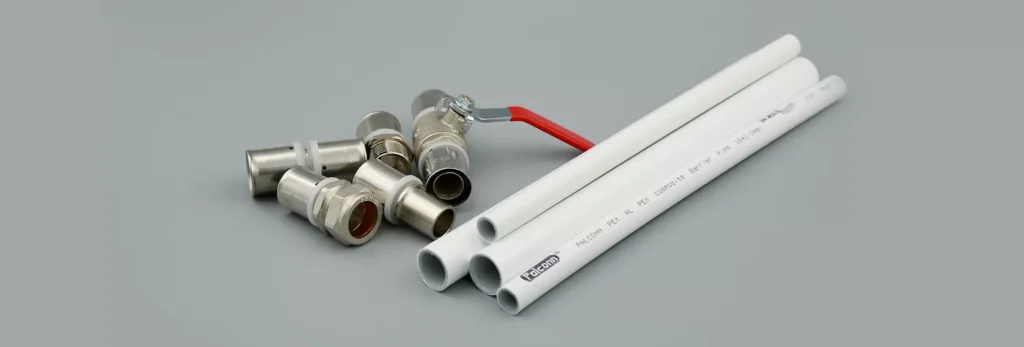In the realm of plumbing and construction, the choice of piping materials is crucial to ensure durability, efficiency, and overall system performance. Among various options available today, PE-RT (Polyethylene of Raised Temperature Resistance) pipes have gained significant popularity due to their versatility and superior thermal properties. This article aims to provide a comprehensive guide on how to select PE-RT pipes, helping you make informed decisions for your next project.

Understanding PE-RT Piping
Before delving into the selection process, it is essential to understand what PE-RT pipes are. PE-RT is a type of polyethylene designed to withstand higher temperatures than standard polyethylene pipes. This characteristic makes PE-RT an ideal choice for hot and cold water distribution systems, underfloor heating, and various industrial applications. PE-RT pipes offer excellent flexibility, impact resistance, and resistance to stress cracking, proving to be a reliable choice for installers and property owners alike.
Key Factors to Consider When Choosing PE-RT Pipes
Selecting the right PE-RT pipes involves several crucial factors. Here, we outline the most salient points to guide you through the decision-making process.
1. Application Requirements
The first step in choosing PE-RT pipes is identifying the specific requirements of your project. Different applications may necessitate variations in pipe specifications, such as diameter, length, and pressure rating. For instance:
- Hot Water Systems: Ensure the selected pipes can handle the higher temperatures typical in hot water applications.
- Recreational Projects: In heating systems for swimming pools or spas, consider the necessary flexibility and resistance to chemical exposure.
- Industrial Uses: Evaluate the mechanical strength required to cope with potential stressors in manufacturing processes.
2. Pressure Rating
Understanding the pressure requirements of your system is key to selecting the appropriate PE-RT pipe. PE-RT pipes are rated for different pressure classes, typically measured in bar (1 bar = 14.5 psi). It’s vital to select pipes with a pressure rating suitable for your application to avoid premature failure, leaks, or other complications.
3. Pipe Size and Diameter
The size of the PE-RT pipes is another critical aspect to consider. This includes determining both the nominal diameter and the wall thickness. The chosen dimensions should align with the flow requirements of your system. Generally, larger diameters facilitate a greater flow rate, but the dimensions should also comply with the plumbing codes applicable in your region.
4. Compliance with Standards
Ensure that the PE-RT pipes comply with relevant industry standards and regulations. Look for certifications from global standards organizations, such as ASTM (American Society for Testing and Materials) and ISO (International Organization for Standardization). Compliance with such standards offers peace of mind regarding the quality and performance of the piping materials.
5. Thermal Stability and Range
Given that PE-RT is designed for elevated temperatures, it is important to assess the thermal stability of the product. Investigate the operating temperature range, which generally lies between -40°C to +95°C. Consistent exposure to temperatures at the upper limits of this range could lead to faster degradation if proper installation and maintenance practices are not followed.
6. Installation Environment
Another aspect that can influence your choice of PE-RT pipes is the environment in which they will be installed. Installations in areas with extreme temperatures, high humidity, exposure to chemicals, or potential physical damage may require specialized piping solutions. Be sure to consider factors such as thermal expansion and contraction, which can significantly affect pipe performance.
7. Quality of the Manufacturer
The manufacturer’s reputation plays a pivotal role in ensuring product reliability and durability. Opt for manufacturers that are well-established in the industry, known for their commitment to quality control and innovation. Reviewing customer testimonials and seeking recommendations from industry professionals can help you make an informed choice.
8. Cost Considerations
While seeking the best quality products, pricing cannot be overlooked. Evaluate the cost-effectiveness of different PE-RT pipes without compromising on their quality. While cheaper options may be tempting, they can lead to increased maintenance costs and early replacements, ultimately driving overall expenses up.
9. Expert Consultation
If you are unsure about any specific requirements or configurations, consulting with plumbing or construction professionals can be invaluable. Experts in the field can provide insights based on practical experience and current industry trends, ensuring that you select the most suitable piping solution for your needs.
Conclusion
Choosing the right PE-RT pipes is integral to the success of plumbing and heating projects. By understanding the application requirements, evaluating pressure ratings, assessing thermal limitations, and considering manufacturing quality, you can make informed choices that enhance the reliability and efficiency of your systems. By following this guide and taking the time to research and consult experts, you’ll be well-equipped to choose the best PE-RT pipes for your needs, ultimately leading to long-lasting and successful installations. As with any system, informed choices today can translate into substantial benefits down the line, ensuring peace of mind and value for years to come. dcpipe-piping system expert

